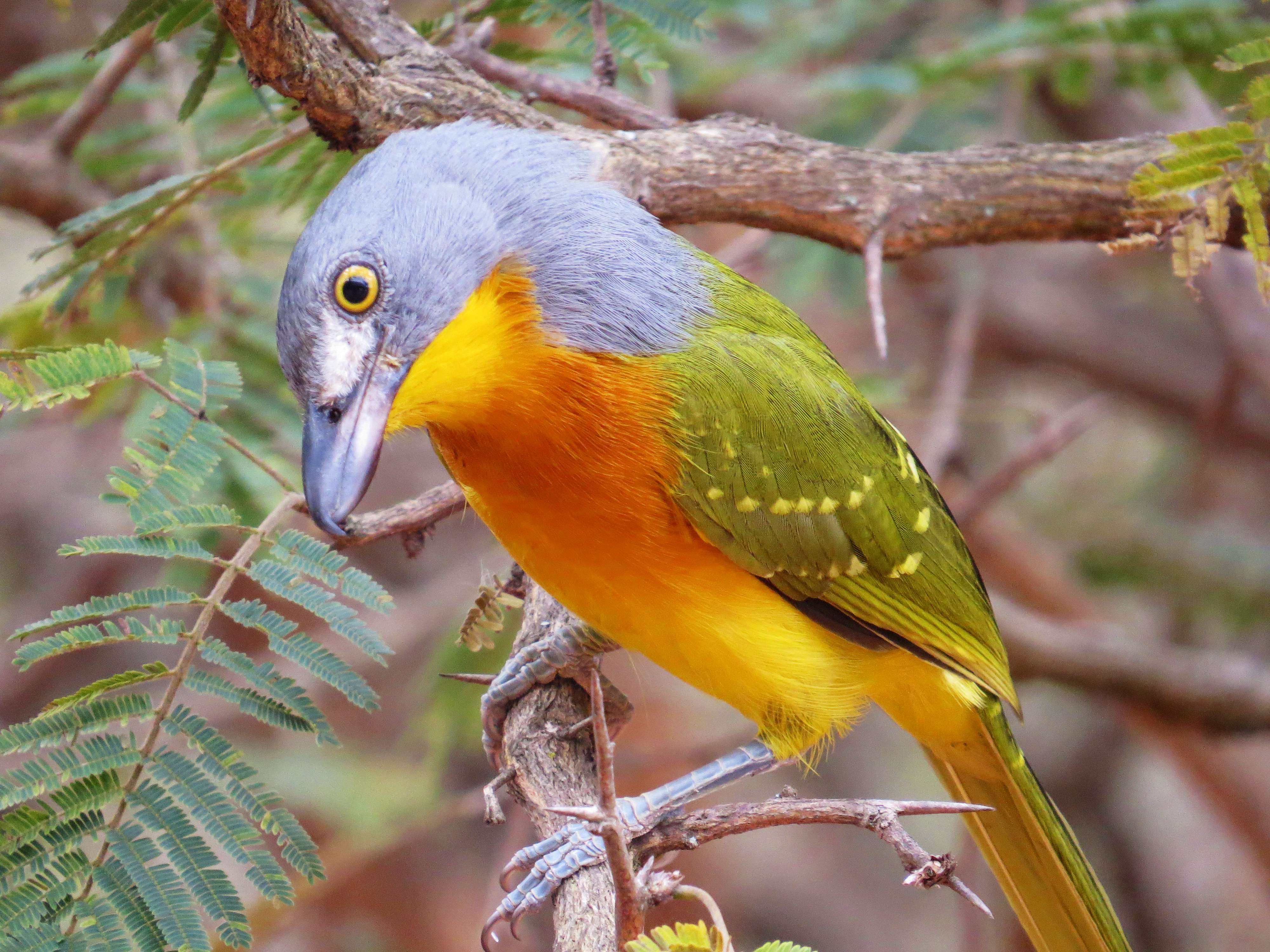
Malaconotus blanchoti
SUBFAMILY
Malaconotinae
TAXONOMY
Malaconotus blanchoti Stephens, 1826, Senegal. Up to seven
races described with regular intergradation at common boundaries.
Main differences concern color of underparts.
OTHER COMMON NAMES
French: Gladiateur de Blanchot; German: Graukopfwьrger;
Spanish: Gladiador de Cabeza Gris.
PHYSICAL CHARACTERISTICS
9–10.2 in (23–26 cm) on average 2.7 oz (77 g). One of the
largest is the Malaconotus shrike, which has a heavy bill. Sexes
are similar. Head and nape is grayish; eyes are pale yellow and
lores are white. Upperparts and wings are mainly olive green;
wings show yellow spots to coverts. Underparts are yellow with
a varying amount of orange on breast. Juveniles are similar, but
duller and with brown eyes. Adult of nominate form, in West
Africa, has no or little orange on its underparts, which are very
dark in the eastern African race approximans. Race hypopyrrhus
from Tanzania southwards has less intensively colored underparts.
DISTRIBUTION
Widespread in sub-Saharan Africa, but absent from the Horn,
the Congo basin, and the southwestern area of the continent.
HABITAT
Various types of woodlands, including riverine woods; can also
occur in large parks or suburban gardens.
BEHAVIOR
Seen solitary, in pairs, or in family groups. Territory covers
about 124 acres (50 ha) and is advertised by various sounds,
particularly by mournful, far-carrying whistles. Generally elusive,
it hides in dense thickets, but may be relatively conspicuous
during courtship activities, which include a display flight.
Looks for food at all levels of vegetation, also occasionally on
ground. Remarkably, caches food like Lanius shrikes; small vertebrates
can be wedged into forks. Local movements have been
suspected; they might be related to the onset of rains.
FEEDING ECOLOGY AND DIET
Arthropods: scorpions, worms, centipedes, but mainly insects.
Small birds and reptiles are also regularly taken.
REPRODUCTIVE BIOLOGY
Monogamous, though little is known. The nest is an untidy
cup, generally placed at about 13 ft (4 m) above the ground
in a small, deciduous tree; it receives two to four, and most
often three eggs. The laying season varies with the geographical
area. Female alone appears to incubate for about 16 days.
Nestling season is about 20 days.
CONSERVATION STATUS
Not threatened.
SIGNIFICANCE TO HUMANS
None known.
Other popular Animals
Photo Gallery of - Gray-headed bush-shrike




 Animalia Life
Animalia Life